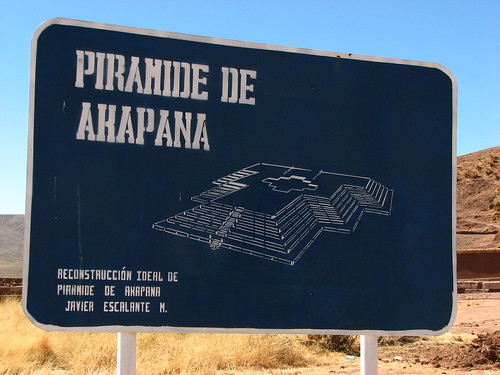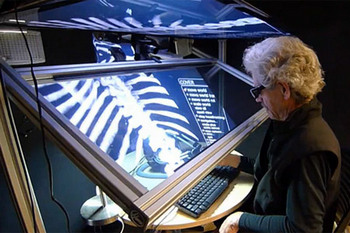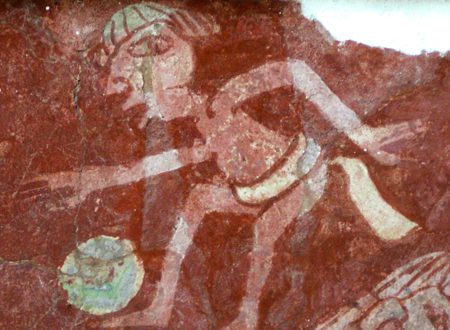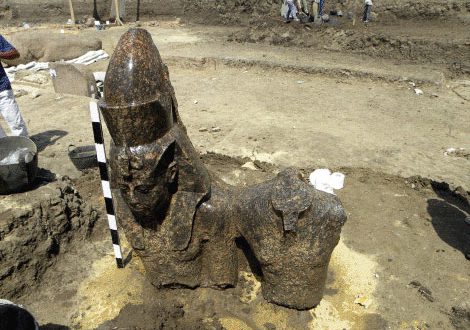 In a bid to bring more tourists to the town of Tiwanaku – some 64km north of Bolivia’s capital La Paz – the Bolivian Andes town put at risk it’s UNWorld Heritage Site status, and even put their Akapana Pyramid in the danger of collapse. They restored their pyramid with adobe – a clay mixture – instead of stone in what some experts are calling a renovation fiasco.
In a bid to bring more tourists to the town of Tiwanaku – some 64km north of Bolivia’s capital La Paz – the Bolivian Andes town put at risk it’s UNWorld Heritage Site status, and even put their Akapana Pyramid in the danger of collapse. They restored their pyramid with adobe – a clay mixture – instead of stone in what some experts are calling a renovation fiasco.
Jose Luis Paz, appointed to assess the damage at the heritage site, told CourierMail the that the state National Archaeology Union erred in choosing to rebuild the pyramid using adobe, when it was clear to the naked eye that the original was built of stone. “They decided to go freehand with the (new) design,” he said. “There are no studies showing that the walls really looked like this.”
The Akapana pyramid is one of the biggest pre-Columbian builds in South America and Tiwanaku itself was the spiritual and political centre of the Tiwanaku culture. The Tiwanaku civilisation, which flourished around Lake Titicaca, was one of the precursors of the Inca empire, the largest pre-Columbian civilisation in the Americas. According to recent estimates at its high days the Tiwanaku community might have had a population count of anywhere between 285,000 and 1,482,000 people.
The looting of the Akapana pyramid’s carved stones and ceramics started soon after the Spanish conquest and the structure was later used as a quarry, from which stones were extracted to build a rail line and a Catholic church nearby. Its sheer size and the still-standing lower decks suggest that the ‘Piramide Akapana’ was once a remarkable building, but as a result of the ransacking and the extreme temperatures and strong winds in the Andean plateau, some 3800m above sea level, the pyramid looks run down. New research shows that this pyramid was never quite finished in antiquity. One Spanish chronicler said of Tiwanaku, “They build their monuments as if their intent was never to finish them.”
This is not only about aesthetics. Mr. Paz adds that the lower decks of the pyramid are slightly tilted because of the extra weight of the adobe walls, which could just as well lead to an entire collapse of the pyramid.
According to Mr Paz the town of Tiwanaku hired the UNAR to renovate Akapana to make it “more attractive for tourists”, regardless of how the pyramid may have originally looked. As thousands of tourists visit Tiwanaku every year for an access fee of $10, a better-looking pyramid which attracts more visitors would mean serious financial gain for the village of Tiwanaku which manages the heritage site. Yet the reconstruction project was halted earlier this year, after a warning from UNESCO to the government.
Pablo Groux – Culture Minister – dismisses the criticism and tells the CourierMail that the UNARjust restored the original form the pyarmid had, in a renovation that was long called for. According to him, what we see now is close to what the construction originally looked like.
Tiwanaku was added to the World Heritage List in 2000 thanks to its ruins bearing “a striking witness to the power of the empire that played a leading role in the development of the Andean pre-Hispanic civilisation”. But if the Akapana pyramid has been to much tampered, UNESCOmight just as well decide to remove it from its list.
Tiwanaku should consider applying for the World Monuments Watch List, which keeps track of cultural heritage considered to be at risk.



